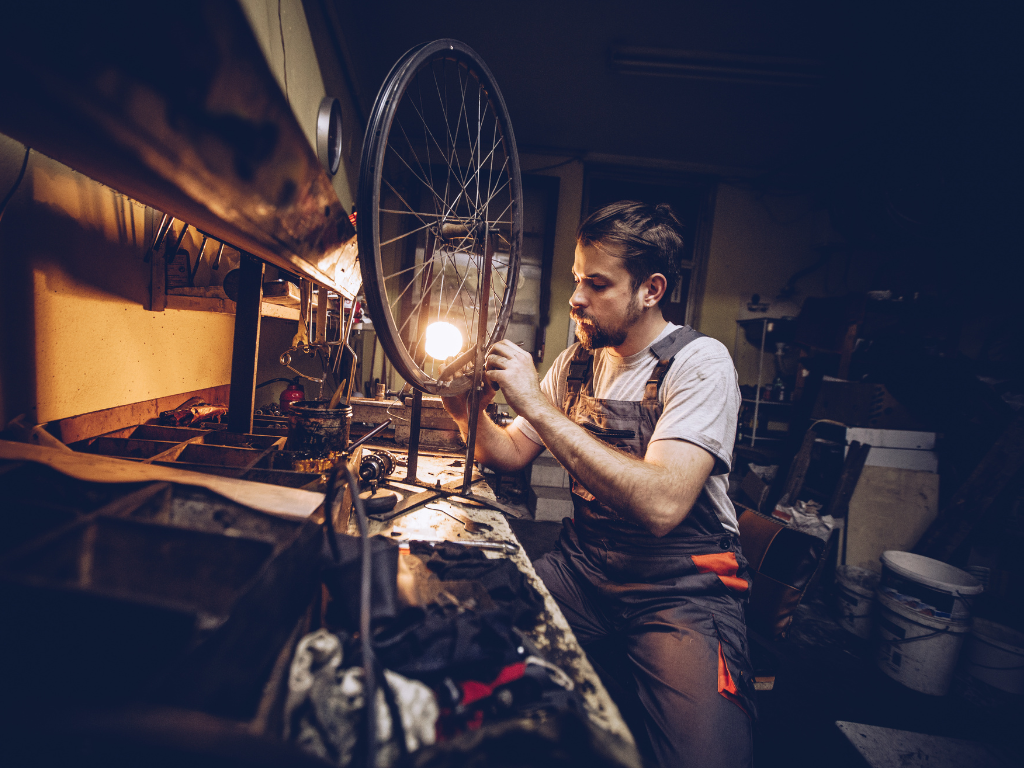
How to choose the best running shoes for you?
There are many different types of running shoes, each designed to meet the specific needs of different types of runners and running activities. It's important to choose the right type of running shoe for your individual needs and foot type, as wearing the wrong type of shoe can lead to discomfort or injury. A professional fitting at a running store can help you find the right shoe for you.
Running shoes fit and size: more comfortable and effective running experience
To ensure maximum comfort and performance, it is essential to choose a running shoe that fits properly. It is crucial to avoid selecting a shoe that is too small, as adequate space in the front is necessary. A widely accepted indicator is to have enough room for your thumb to fit comfortably between the tip of your longest toe and the end of the shoe. Additionally, running shoes generally require at least half a size larger than road shoes. The shoe should also provide a snug fit around the midfoot, which is the central part of the foot, without being overly tight. By prioritizing proper fit, you can enjoy a more comfortable and effective running experience.
Selecting the optimal footwear involves taking into account several factors, such as the surface you will be running on (asphalt, dirt, mixed routes), your running style, foot position (pronation), weight, and the desired running sensation.
The Importance of Foot Positioning: Exploring the Three Types of Pronation
Foot positioning refers to the way we naturally position our feet during movement. When we refer to pronation, we are specifically describing the way the foot flexes and rolls during the weight-bearing phase of movement. This is a protective mechanism that helps to absorb shock and ensure smooth movement. There are three main types of pronation:

-
Excessive Pronation (Overpronation)
Overpronation occurs when the foot flexes inward excessively, leading to overloading of the foot and ankles. This can result in long-term damage. -
Normal Pronation
During normal pronation, the foot rotates symmetrically without overloading either the inner or outer corners. -
Supination
Supination happens when the foot flexes too little, causing it to roll excessively on the outside. This poor foot stance can also lead to damage, although it is not as common as overpronation..
How many types of running shoes are there?
While there are numerous categories available, this compilation showcases five categories of running shoes: neutral shoes, stable shoes, racing shoes, natural running shoes, trail running shoes.
1) Neutral shoes (Neutral cushioning)
For runners with normal pronation, but also for those who tend to supination. It is a neutral type of footwear that is especially suited to individuals whose weight is average. These shoes are designed for runners who have a neutral or normal foot strike, which means the foot lands on the ground with an even distribution of weight across the heel and forefoot. Neutral running shoes are designed to provide a balance between cushioning and responsiveness, and can be used for a variety of distances and are good on various terrains: asphalt, dirt paths in the forest and tartan track.
2) Stable running shoes (Stabilized cushioning)
These are designed to correct overpronation, a common issue for runners where the foot rolls too far inward while running. Stable running shoes help prevent excessive flex and facilitate a natural roll. They are suitable for large people and for practically any surface. Even those with normal pronation can use these shoes. For example, in an untrained runner, the foot muscles fatigue earlier, causing greater inward bending.
3) Competition shoes (Fast reactive)
Competition shoes for running are designed to provide lightweight and responsive support, and are optimized for speed and efficiency. This running shoe is mainly characterized by an energy return at the moment of the roll, as well as by the high flexibility. This type of shoe is only suitable for runners of normal weight and with robust foot muscles because it is like a second skin and each step on the ground is clearly felt.
4) Natural running shoes
These shoes are designed to promote a more natural running form by providing minimal support and cushioning, and allowing the foot to move and flex as it would without a shoe. They are typically lightweight and have a low heel-to-toe drop, which means the heel and forefoot are at the same height.
5) Trail running shoes
These are designed for running on off-road terrain, such as trails, rocky paths, or muddy surfaces. It is very stable, has a grippy sole and a robust design. Almost all trail running shoes have a waterproof membrane.
By considering the foot position and the different types of running shoes, you can make an informed decision and choose footwear that will enhance your performance and provide the necessary support and comfort for your specific needs.
The Importance of proper running socks: Tips to Keep You Comfortable and Prevent Injury
To ensure optimal comfort and performance while running, it's important to pay attention to your socks. Running experts advise keeping your toenails trimmed short and tying your shoes securely to prevent your feet from sliding forward during your run. Additionally, wearing specially designed running socks can help minimize friction and put your feet in the best possible condition for running. Look for socks with adequate padding and support to help prevent blisters and other foot-related discomfort. With the right socks and footwear, you can focus on enjoying your run and achieving your goals.
There is no one running shoes suitable for everyone, whether you are a pro or an amateur. And the choice is wide: running shoes are available in many colors and designs. But it's not just a matter of looks! Running style, personal goals and foot position are much more important. Choose the right running shoes with our advice!








